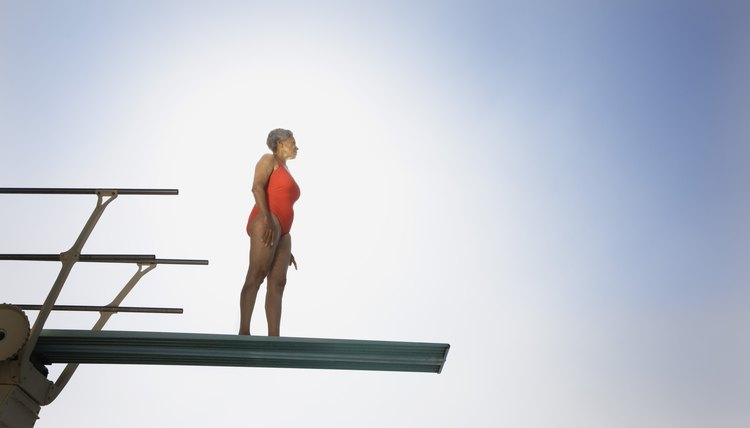What does fact checked mean?
At SportsRec, we strive to deliver objective content that is accurate and up-to-date. Our team periodically reviews articles in order to ensure content quality. The sources cited below consist of evidence from peer-reviewed journals, prominent medical organizations, academic associations, and government data.
- Journal of Science and Medicine in Sport: Risk Reduction in Diving Spinal Cord Injury: Teaching Safe Diving Skills
- Journal of Science and Medicine in Sport: Risk Reduction in Diving Spinal Cord Injury: Teaching Safe Diving Skills
The information contained on this site is for informational purposes only, and should not be used as a substitute for the advice of a professional health care provider. Please check with the appropriate physician regarding health questions and concerns. Although we strive to deliver accurate and up-to-date information, no guarantee to that effect is made.
How to Dive Off a Diving Board

Learning how to properly dive off a diving board is essential for avoiding possible injury. An average of 6,500 children and young adults are admitted to the hospital each year for diving-related injuries. According to a study published in "Pediatrics," researchers affiliated with the Center for Injury Research and Policy found that most diving-related injuries occur because the diver collided with the board or platform. In a study published in the "Journal of Science and Medicine in Sport," JD Blivitch, et al. reported that low-skill divers who were taught proper diving form significantly decreased their likelihood of injury. Consider enlisting a certified swim instructor to help you learn the basics of diving.
Check to make sure the water is a minimum of 9 feet deep before attempting to dive.
Read any posted diving board rules, available at most public swimming pools. If you don't see any rules, ask the lifeguard or a supervising adult if any rules govern the use of the board.
Approach the diving board. Wait until the diver in front of you has performed his dive and has exited the diving well completely. Make sure the diving well is clear so you don't accidentally dive on another swimmer.
Walk to the end of the board. Running on the board could cause you to slip or trip, especially if the board's spring catches you off guard.
Test the board's spring by bending your knees and using your weight to see how much the board bounces. Do not fully jump on the board to test the spring because this could lead to injury.
Bend your knees to bend the board, but don't jump up and down. If you jump, the board's rebound effect could knock your legs unexpectedly out from under you or throw your body off balance and cause an injury.
Jump once into the air, extend your arms above your head, overlap your hands and lock your thumbs together. Keep your arms pressed tight against your ears throughout the dive.
Bend at the waist, propelling your body toward the water head-first. Allow your hips and legs to follow your arms and head into the water. Keep your body as straight as possible when entering the water
Tips
If you don't feel comfortable jumping into your dive, start by standing on the edge of the board. Place your arms above your head, interlocking your thumbs. Bend at the waist as though you wanted to reach down and touch your toes. Stand up on your tiptoes and allow your body to tip forward into the water. Dive into the water fingers first, with the rest of your body following.
Warnings
If you bend forward too forcefully when jumping into your dive, you could over-rotate and strain your back or hit the water at an uncomfortable angle.
Rules exist for a reason. If you fail to abide by the pool rules, you might injure yourself or others.
Explore In Depth
References
Tips
- If you don't feel comfortable jumping into your dive, start by standing on the edge of the board. Place your arms above your head, interlocking your thumbs. Bend at the waist as though you wanted to reach down and touch your toes. Stand up on your tiptoes and allow your body to tip forward into the water. Dive into the water fingers first, with the rest of your body following.
Warnings
- If you bend forward too forcefully when jumping into your dive, you could over-rotate and strain your back or hit the water at an uncomfortable angle.
- Rules exist for a reason. If you fail to abide by the pool rules, you might injure yourself or others.
Writer Bio
Laura Williams has worked in recreation management since 2004. She holds a master's degree in exercise and sport science education from Texas State University, as well as a B.A. in exercise and sport science from the University of Mary Hardin-Baylor.
